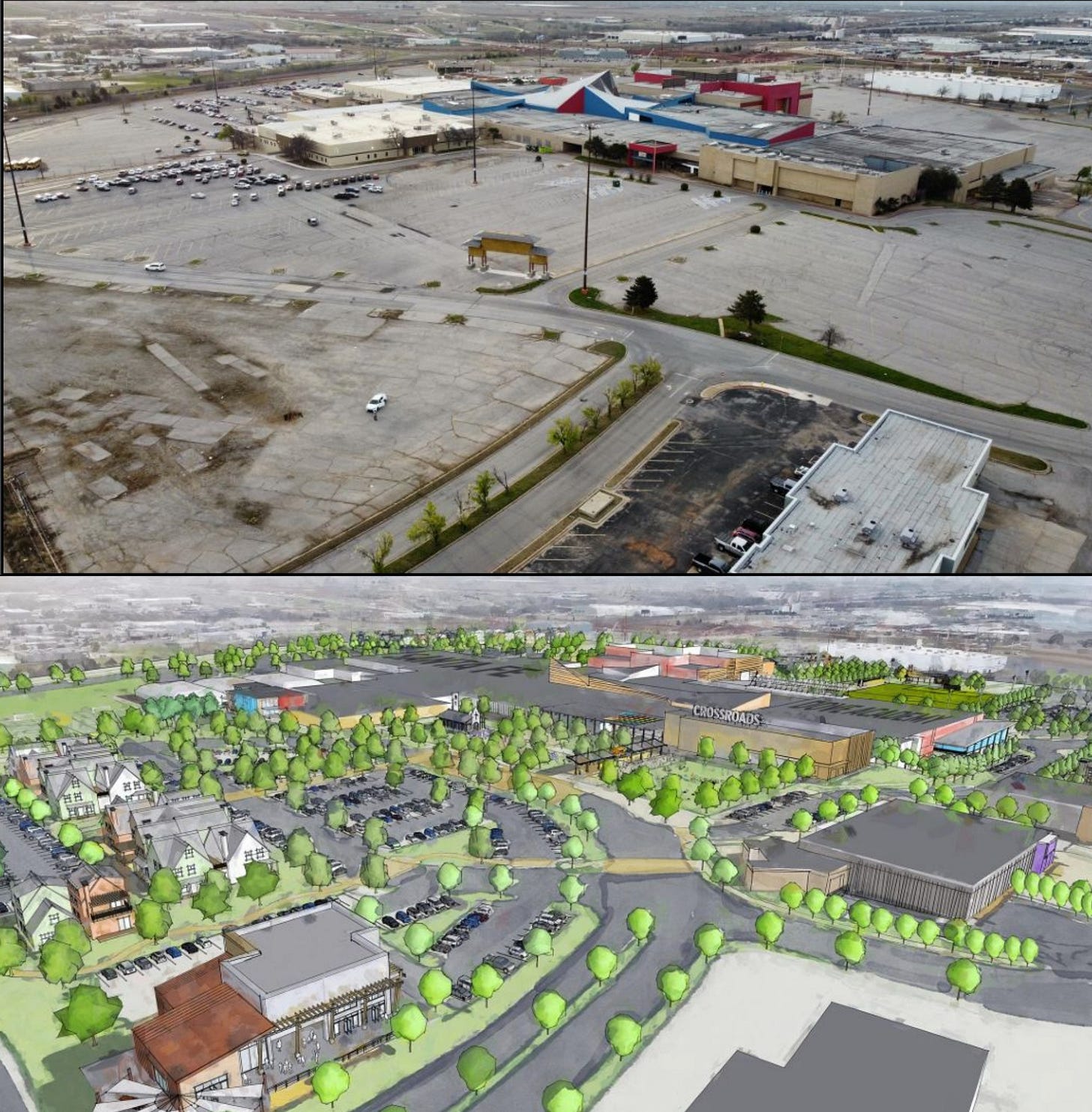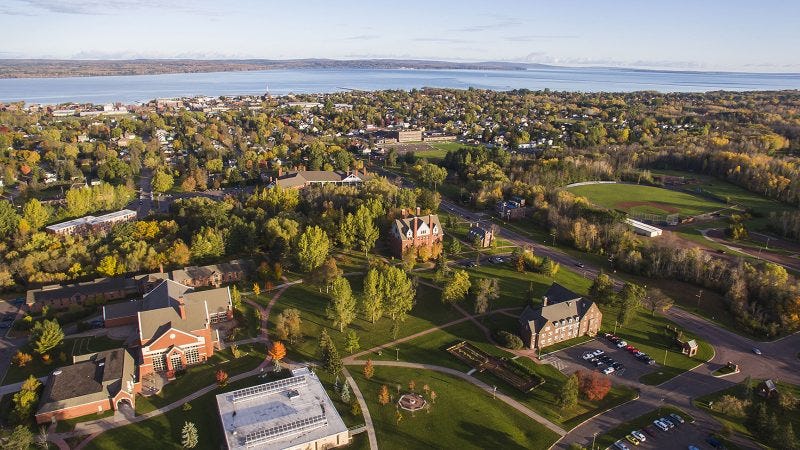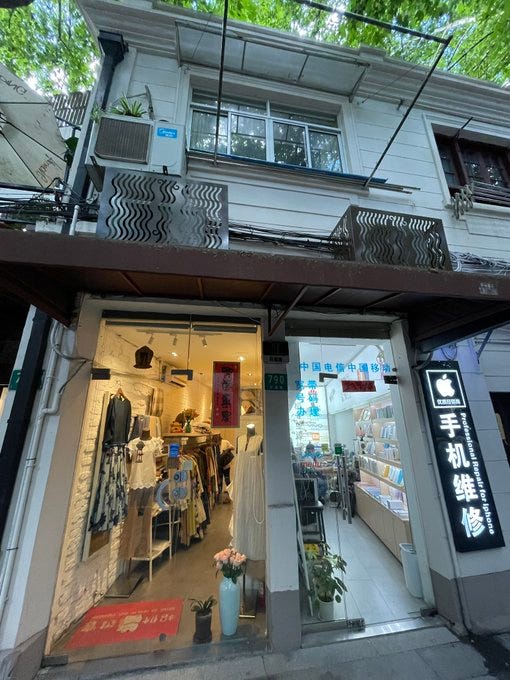Nook and Cranny Urbanism, How Cold to Cancel Class?, Mall Into School & More
Around the College Towns: Links and commentary related to urbanism and higher ed for the week of Feb. 15 - Feb. 22
Note: Welcome to College Towns, especially new people who subscribed via the buzz around my previous article on school car pickup lines. I post two articles a week: one a full original article on Mondays and another link round-up article on Fridays. Today’s article is a link round-up. In these, I usually cover stories related to urbanism and education that may have fallen through the cracks, rather than commentary on what everyone is already talking about (hence, no Trump admin stuff in these).
Higher Ed News
Faculty Disconnected from Career Outcomes
An Inside Higher Ed article mentions that only “half of instructors say they’re very comfortable advising students on careers in their discipline,” which seems surprisingly low to me. I understand there is a disconnect between academia and careers, but this is a massive gulf.
I guess because my academic field is education itself, it makes it easier to advise students to work in universities or schools, as I have direct experience in these institutions. I just cannot imagine having so much unfamiliarity with the careers that my students might be going into that I would be afraid to advise them.
I think this disconnect between careers and academia should be more of a concern for higher ed. We don’t have to be vocational schools, but we should have some competencies to advise our students’ futures. This is definitely worthy of a deeper dive post—what do you think?
How Cold Is Too Cold for Class?
A professor over on r/subreddit asks: when is it too cold for in-person teaching? The user says that the temperature was 28° F and his students were requesting to switch to virtual classes. My Canadian and northern colleagues were laughing at this question:
Wow 28 is warm compared to my campus. Class outside?
I was a grad student at UW-Madison and we never had a snow day in 8 years. We'd get 2 feet of snow, the temps would be -19, and we'd still have class.
Unless the temperature drops to -20 F with windchills in the -30 F range, we don’t cancel classes. Those days make 28 feel like a heat wave.
I teach in Saskatchewan. Campus is open and classes run at -40 that happened this week.

Now, I have admittedly gotten soft living here in Southern California for seven years, but even I think it would be crazy to cancel class due to barely freezing temperatures. I can see severe snow or ice, especially in places without proper equipment. I also love a good Snow Day, which are unfortunately disappearing due to Zoom U, but I’m not sure I ever had a Cold Day off. What do you think?
More Higher Ed Links
Profs in Australia are fed up with the state of their universities due to online learning, lowering standards, and optional attendance.
Student rejected from every University of California school, but was still hired by Google, is suing the state for discrimination.
Native American U in danger of shutting down due to DOGE budget cuts.
Harvard is helping fund a new rail station in Boston, but it’s scheduled to open in 2045. Lunacy!
Northland College, in Ashland Wisconsin, announces its closure after 132 years of operation. RIP
Urbanism News
Revitalizing Dead Malls and Offices in Oklahoma
It’s not just college campuses that close down. In my home city of Oklahoma City, Chesapeake Energy once had a robust so-called campus footprint in town. Tough times have hit the company, now known as Expand Energy, and much of the campus has now been listed for sale. Good location, ready-made for a university looking to conquer the OKC metro.
I say this because right down the highway is a mall I used to frequent as a kid, now dead, has been a charter school. The rest of the property has been purchased for only $9 million dollars (steal!). To be repurposed into a bigger school and community center. Interesting idea for our dying malls, even if this isn’t the perfect proposal:

Stadiums as Development
It’s not just the US cities that plunge billions into boondoggle stadium projects with hopes of economic and civic development. Yaling Jiang at Following the Yuan has a post on the opening of one of the world’s most expensive stadiums in Hong Kong.
One of the key discussions surrounding the sports park is the positioning of the 50,000-seat stadium when compared to the 40,000-seat Hong Kong Stadium that hosted Lionel Messi’s friendly in 2024. “The latter has already struggled with low utilization, so adding another large venue raises concerns about redundancy,” said HK-based analyst Yuhao Yang.
Why is Japan Good When We Always Hear Their Economy is Bad?
Tomas Pueyo at Uncharted Territories has an interesting piece entitled ‘Why Japan Succeeds Despite Stagnation’. Scroll down past the decline gloom to the good bits, where he credits a lot of the success to sensible housing and environmental laws. Two things the US generally does poorly, especially in California (where I live now).
Permissive national zoning and an absence of environmental proceduralism leads to Japan having the highest rate of housing construction and the lowest home price to income ratio in the OECD.
Speaking of Japan Sinica by Kaiser Y Kuo has a fun podcast on the comparison between 1980s Japan and current China, with guest Andy Liu, a professor at Villanova. It reminds me of all the failed predictions from that era, such as The Coming War with Japan.
These fears of Japan in the 1980s and part of the 1990s really did have a considerable influence on popular culture—Blade Runner and the entire cyberpunk aesthetic, for example. I will have a future post on this issue.
What is Nook and Cranny Urbanism?
Strong Towns talks about Nook and Cranny urbanism. It describes this as “The city evolved organically, filling in nooks and crannies with buildings and spaces that adapted to the existing topography and ownership patterns.”
I have noticed this concept, too. In much of the American landscape, due to stricter zoning laws, areas can have a lot of headspace because zoning mostly accounts for larger, formal categories.
I see this quite a bit on my trips to China. See above on a street in Shanghai: a little closing shop next to a phone store. In our system, we often don’t let people make small bets like these little shops. Our zoning laws often only allow bigger stores that take more room, leaving small spaces empty. It’s why walking through many of our cities and towns can feel so desolate.









Thank you for sharing and put it into the larger context!